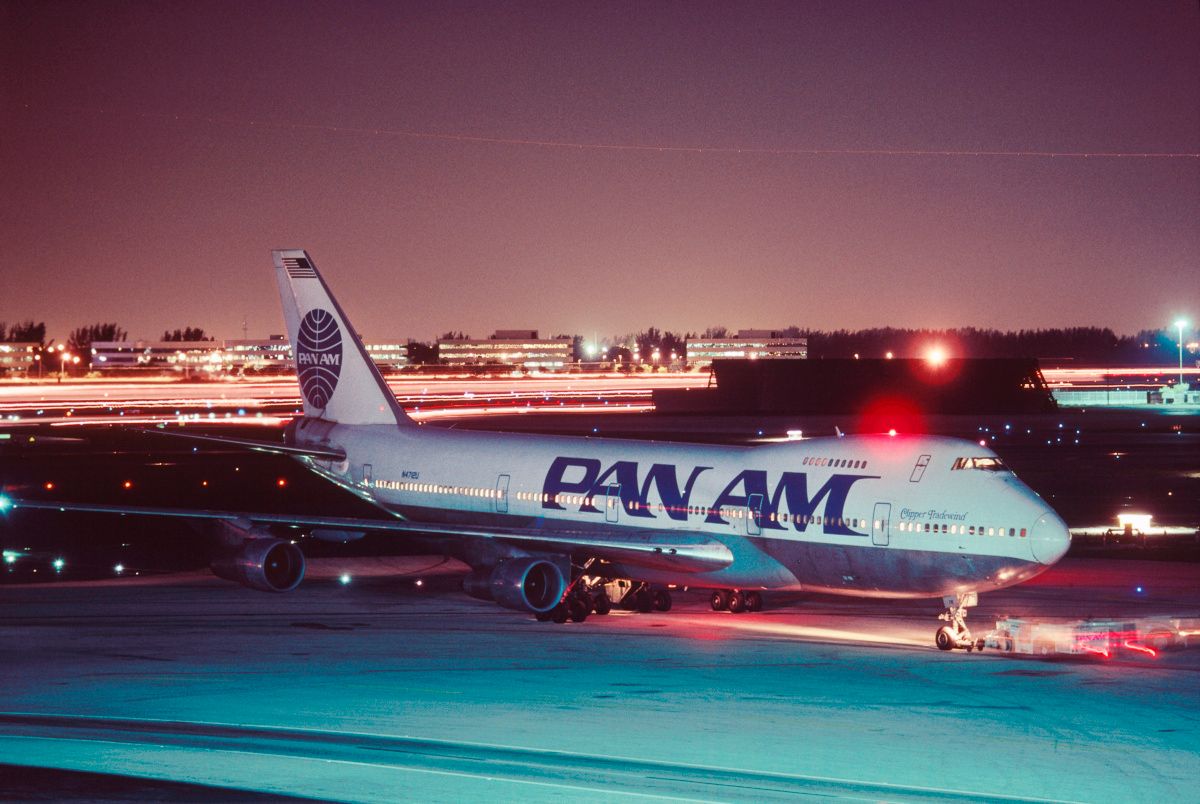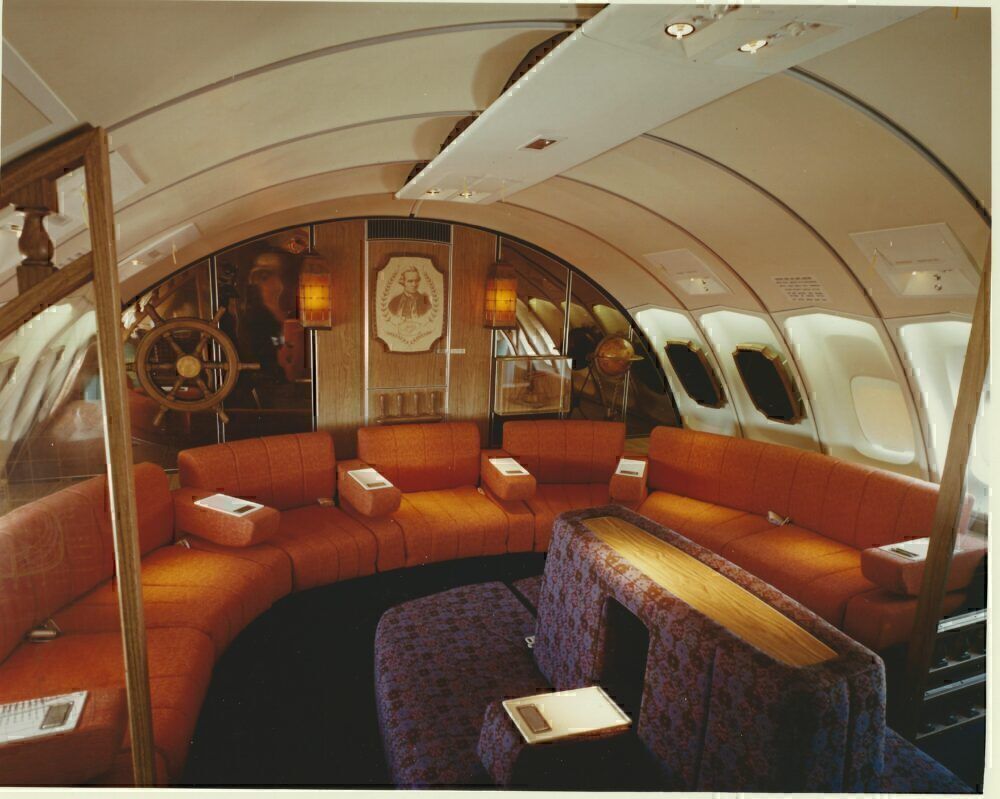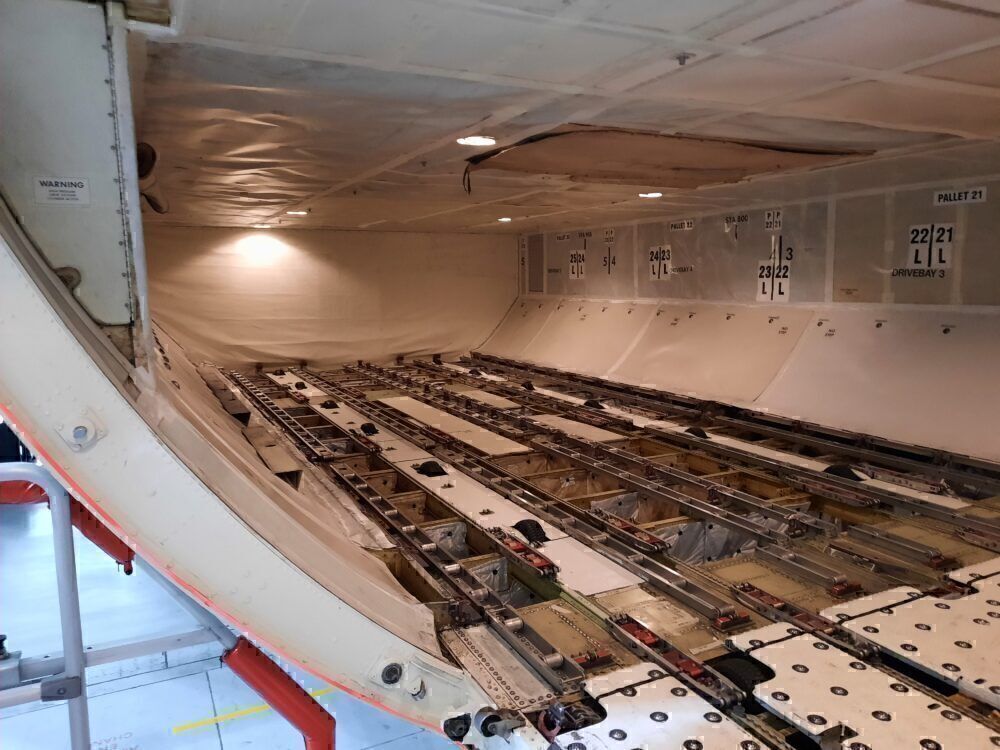The Boeing 747 is an aircraft that fundamentally changed commercial aviation. Its high capacity led to a lower cost per seat, making air travel far more accessible for passengers worldwide. Boeing also used the aircraft to experiment with various innovations in onboard service. One of these was its proposed below-deck 'Tiger Lounge.'
Existing lounges onboard the 747
In the 747's early years, it was not uncommon for operators to use the top deck as a lounge area, rather than for seating. For example, Australian flag carrier Qantas christened the top deck of its 747s as the Captain Cook Lounge. Here, first class passengers could socialize and enjoy a drink away from the fixed positions of their seats downstairs. Such passengers accessed the lounge via a spiral staircase from the lower deck.
As the years passed, more and more airlines began opting to utilize the upper deck as an additional cabin, typically for premium passengers. To accommodate for this, Boeing began offering airlines 10 windows on either side of the upper deck. In contrast, on the original 747-100s where this area functioned as a lounge had just three on each side. However, Boeing did propose another lounge design in a somewhat more unconventional area of the aircraft.
Stay informed: Sign up for our daily aviation news digest.
A lounge below the deck
Today, space below the passenger deck is highly valuable for airlines. Many charge passengers for checked baggage, and they can also use this area to gain extra revenue by transporting cargo. This has become especially crucial during the ongoing coronavirus pandemic. For example, Virgin Atlantic increased its cargo operations by 50% last year.
However, in the 1960s, Boeing proposed a radically different use for this space. Its exclusive 'Tiger Lounge' was to be a communal area situated below the main passenger deck. It took its name from the striking tiger-print seating, which was certainly of its time!
According to Executive Traveller, a similar area had already been successfully installed on the Boeing Stratocruiser. As such, the company worked with designer Walter Teague to formulate a similar concept for its jumbo jet.
Never featured on a production aircraft
The Tiger Lounge would have seated 30 passengers. Although it had no windows, the glass-topped bar would have allowed them to look downward through a viewing portal, which would have been fitted to the aircraft's underside. Confident in its exciting new design, Boeing constructed a mock-up of the lounge to present to prospective 747 operators.
However, the airlines deemed that to use more of the below-deck space would be a more profitable enterprise. In any case, the New York Times reports that airline deregulation in 1978 spelled the end for onboard lounges as a whole. As such, the Tiger Lounge would likely have only had a short spell in the skies, had airlines taken up the option. Nonetheless, as a proposal, it remains a fascinating product of its time.
What do you make of this unconventional lounge design? Do you think it would have proved successful with passengers had it been produced? Let us know your thoughts in the comments!



